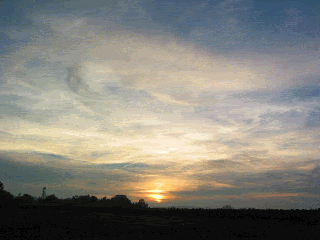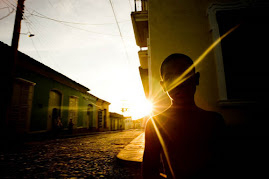Peace,
This is why I roll hard with my Green Gangsta. The conditions that are on these indigenous lands are a result of the after effect of Imperialism, Colonialism, Racism, and the post-industrial age. The land has literally been raped of nutrients. It is important that Environmental Racism is examined when we are approaching these subjects. Many times 'green activist' when they come into these situations tend to ignore the CAUSE. And YES there is White Supremacy component.
POOR HAITIANS EAT DIRT!
Poor Haitians resort to eating dirt
By JONATHAN M. KATZ, Associated Press Writer Tue Jan
29, 7:43 PM ET
PORT-AU-PRINCE, Haiti - It was lunchtime in one of
Haiti's worst slums, and Charlene Dumas was eating
mud. With food prices rising, Haiti's poorest can't
afford even a daily plate of rice, and some take
desperate measures to fill their bellies. Charlene, 16
with a 1-month-old son, has come to rely on a
traditional Haitian remedy for hunger pangs: cookies
made of dried yellow dirt from the country's central
plateau.
The mud has long been prized by pregnant women and
children here as an antacid and source of calcium. But
in places like Cite Soleil, the oceanside slum where
Charlene shares a two-room house with her baby, five
siblings and two unemployed parents, cookies made of
dirt, salt and vegetable shortening have become a
regular meal.
"When my mother does not cook anything, I have to eat
them three times a day," Charlene said. Her baby,
named Woodson, lay still across her lap, looking even
thinner than the slim 6 pounds 3 ounces he weighed at
birth.
Though she likes their buttery, salty taste, Charlene
said the cookies also give her stomach pains. "When I
nurse, the baby sometimes seems colicky too," she
said.
Food prices around the world have spiked because of
higher oil prices, needed for fertilizer, irrigation
and transportation. Prices for basic ingredients such
as corn and wheat are also up sharply, and the
increasing global demand for biofuels is pressuring
food markets as well.
The problem is particularly dire in the Caribbean,
where island nations depend on imports and food prices
are up 40 percent in places.
The global price hikes, together with floods and crop
damage from the 2007 hurricane season, prompted the
U.N. Food and Agriculture Agency to declare states of
emergency in Haiti and several other Caribbean
countries. Caribbean leaders held an emergency summit
in December to discuss cutting food taxes and creating
large regional farms to reduce dependence on imports.
At the market in the La Saline slum, two cups of rice
now sell for 60 cents, up 10 cents from December and
50 percent from a year ago. Beans, condensed milk and
fruit have gone up at a similar rate, and even the
price of the edible clay has risen over the past year
by almost $1.50. Dirt to make 100 cookies now costs
$5, the cookie makers say.
Still, at about 5 cents apiece, the cookies are a
bargain compared to food staples. About 80 percent of
people in Haiti live on less than $2 a day and a tiny
elite controls the economy.
Merchants truck the dirt from the central town of
Hinche to the La Saline market, a maze of tables of
vegetables and meat swarming with flies. Women buy the
dirt, then process it into mud cookies in places such
as Fort Dimanche, a nearby shanty town.
Carrying buckets of dirt and water up ladders to the
roof of the former prison for which the slum is named,
they strain out rocks and clumps on a sheet, and stir
in shortening and salt. Then they pat the mixture into
mud cookies and leave them to dry under the scorching
sun.
The finished cookies are carried in buckets to markets
or sold on the streets.
A reporter sampling a cookie found that it had a
smooth consistency and sucked all the moisture out of
the mouth as soon as it touched the tongue. For hours,
an unpleasant taste of dirt lingered.
Assessments of the health effects are mixed. Dirt can
contain deadly parasites or toxins, but can also
strengthen the immunity of fetuses in the womb to
certain diseases, said Gerald N. Callahan, an
immunology professor at Colorado State University who
has studied geophagy, the scientific name for
dirt-eating.
Haitian doctors say depending on the cookies for
sustenance risks malnutrition.
"Trust me, if I see someone eating those cookies, I
will discourage it," said Dr. Gabriel Thimothee,
executive director of Haiti's health ministry.
Marie Noel, 40, sells the cookies in a market to
provide for her seven children. Her family also eats
them.
"I'm hoping one day I'll have enough food to eat, so I
can stop eating these," she said. "I know it's not
good for me."
__._,_.___
The white European Death Cult
6 years ago














No comments:
Post a Comment